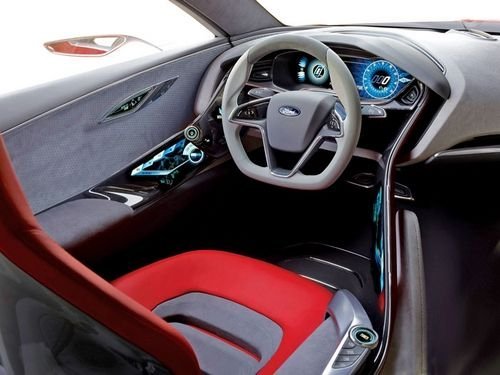Cloud computing could transform car interiors

Potential features go far beyond present uses of in-car Internet access. With the expanded data storage available, a car could become a highly customized personal assistant connected to the owner's home, smartphone and computer.
For example, a car could automatically tailor ride and handling characteristics for an individual driver on an individual route, instead of having the driver choose from a limited number of modes such as "sport" or "comfort." Or it could use the owner's personal calendar to have the interior heated or cooled before he or she gets into the car.
Depending on the cloud for memory storage, rather than putting vast amounts of memory storage in the vehicle, could enable such functions, automakers say.
"Having to carry all that memory in the vehicle wouldn't be practical," said Paul Mascarenas, Ford’s chief technical officer.
Storing data in the cloud also could save precious space in the instrument cluster and the center stack. According to General Motors, for instance, most luxury cars have around 20 buttons controlling the radio and entertainment functions.
GM's new CUE -- for Cadillac User Experience -- touch screen reduces that to just four buttons. The system can pair with up to 10 Bluetooth-enabled mobile devices, USBs, SD cards or MP3 players, GM says.
Rival Ford used the Evos plug-in hybrid concept shown at last month's Frankfurt auto show to demonstrate what cloud-based technology could do.
According to Mascarenas, the Evos uses technology that's either already on tap or right around the corner.
"The cloud exists. All these technologies exist," Mascarenas said in an interview. "It's not like we have to invent this. It's already here."
But automakers say it probably will be four or five years before applications beyond infotainment appear on production models.
Potential uses include adjusting vehicle characteristics such as braking, suspension and steering to match road conditions. A car with a global positioning system connected to the cloud "always knows where it is, and always knows what's ahead," Mascarenas said in a presentation.
Instead of building a suspension that performs well enough for most drivers most of the time, access to data stored in the cloud permits an "almost infinite" capability to adjust to a given road, he said.
Ford also is experimenting with a heart rate monitor embedded in the driver's seat as a possible way to cope with driver distraction, Mascarenas said.
Hypothetically, a car could mute a driver's cell phone and turn off extraneous gauges when GPS information, the heart rate monitor, speed and steering and suspension data indicate excessive speed on a winding road.
In separate interviews, GM and Toyota Motor Sales USA executives said they also are developing functions using Internet access.
Jon Bucci, vice president of advanced technology for Toyota, said the automaker is working on vehicle-to-road and vehicle-to-vehicle functions.
But Bucci was cautious about changing the driving characteristics of a vehicle.
"If it's something that's mission-critical ... that's a lot different, that's more onerous, more intrusive," Bucci said.
As noted, GM recently unveiled the CUE system, scheduled to debut in 2012 in the Cadillac XTS and ATS sedans and SRX crossover. Its touch screen mimics devices such as the Apple iPad. GM's OnStar system also is rolling out apps, including one that allows Chevy Volt drivers to recharge, preheat or precool their cars by remote control.
While Ford is promoting high-tech experimentation, Ford also serves the industry as a cautionary tale.
Customer dissatisfaction with the high-tech MyFord Touch touch screen interface hurt Ford's results in the 2011 J.D. Power and Associates Initial Quality Study. Ford fell below the industry average in the 2011 study, down from a No. 5 ranking a year earlier.
David Sargent, vice president of global vehicle research at J.D. Power, said some customers found the Ford system too complicated. There were also technical glitches. On the other hand, Ford owners who like MyFord Touch "really, really like it," he said.
"The key is, everything has to be intuitive," Sargent said. "A, it has to function as designed; B, it has to be simple."
With the near-universal use of the Web and consumers' fondness for smartphones, automakers really don't have much choice about increasing connectivity, Toyota's Bucci said.
"We need to recognize that, and we have a responsibility to the customer to make sure they can interact with the right content at the right time, befitting the fact that they're in a vehicle," he said.
Sargent said potential applications probably exceed consumer desires. For example, at the Evos preview, Ford showed off a potential feature that would link a car owner's appointment calendar to the car and to a wired "smart" house. The idea was that if the car owner's first appointment of the day canceled during the night, the car could automatically reset the driver's bedroom alarm clock to allow for an extra hour of sleep.
Said Sargent: "Some of these technologies will go into production and they will be used, and they will catch on. Some of the ones that are a little more obtuse won't."
Related News


